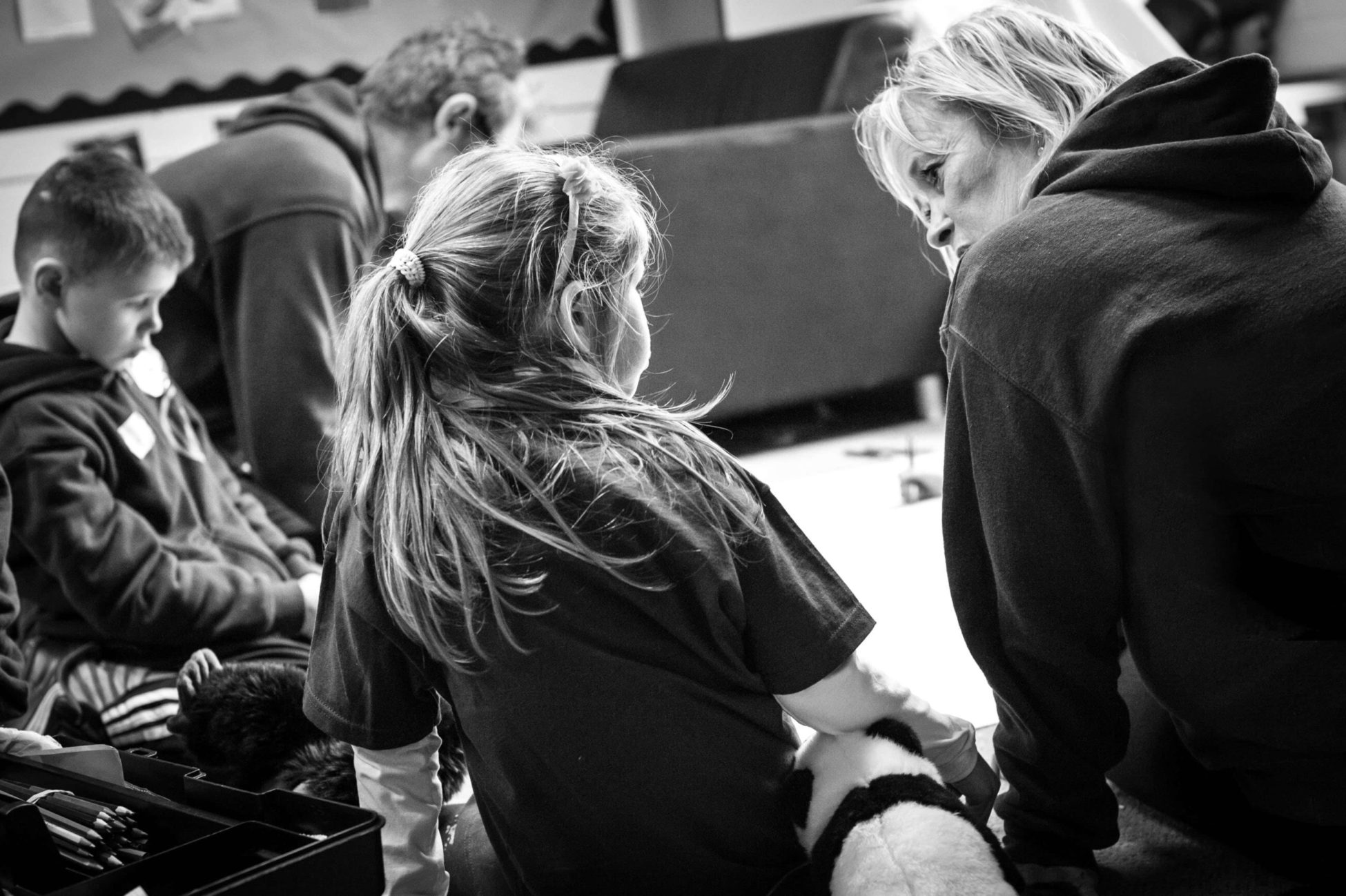Telling a child or young person that their mum, dad, brother or sister has died is difficult enough, let alone telling them their loved one has been murdered. It can be tempting to shield them from the details of a violent death, however police and media involvement means that the details will quickly become public knowledge. It’s very likely that children will find out somehow – in the media, on social media, overheard conversations. You will probably prefer that they hear what happened from you rather than from rumours or from another child in the playground.
Be there to reassure your children
You will, of course, want to protect your children and to let them know they can trust you. If at all possible, a parent or carer is generally the best person to tell their children this difficult news. It will also give you a chance to reassure them that they are safe. If you are just not able to do this, then be with the children when someone else, for example the police family liaison officer, tells them.
It may be that the child witnessed the death. In this situation, it is particularly important to talk clearly about what happened to acknowledge the truth of what they saw and heard. It is also necessary to reassure the child that the death was not their fault and there was nothing they could have done to prevent it.
Give them age-appropriate information
It is really important that children have a clear understanding (as far as their age allows) that the person has died. Even young children need an explanation about what has happened to someone who is important to them. The worst has already happened – nothing you can say can make it any worse.
It can help even very young children to have a simple story that they can use to re-tell and slowly make sense of what has happened. Use words they understand. Always ask them what they think about what you have said to make sure that they have actually understood. For younger children, information in small chunks may be easier to understand.
Young children may not need to know the exact details of how the person was murdered when it first happens. It will be possible to return to this as the child’s understanding develops and they seek more information.
“Now you are a little older, I’d like to tell you some more about how your Auntie Becs died. I told you that she was killed by the man who was her boyfriend. Can I now tell you what happened on that day and how she died?”
Be honest
Events surrounding murder can often become very confused. Facts may be changed to become more comfortable to live with – or to make them easier to explain. It may be, for example, that children have been previously unaware of a parent’s activities which have since become public knowledge. It may seem like the worst possible time to talk about this but giving the children an honest explanation will help them make sense of what they are hearing and what is happening.
“I haven’t told you before but your dad was using drugs and selling them to other people. That’s why we were arguing a lot and that’s probably why he was killed.”
Build up information in stages
Our experience shows that there may be stages involved in telling a child that someone has died as a result of violence. These stages may happen in the space of minutes, hours, days, weeks, months or even years. The pace between the stages is often led by the child’s needs and their ability to understand. This, in turn, is affected by their age and developmental understanding. The pace will also be affected by the situation, for example, the possibility of your child finding out what has happened from other sources or from older members of the family.
The stages may be:
- Explaining that the person has died
- Giving simple details about the death
- Saying that the person died as a result of homicide
- Providing a more detailed description of how the person died
- Explaining the process that will be followed – and what will happen next
- Talking about the person who committed the crime – or, if not known, what is being done to find them.
This all takes time. It needs to be handled with care, giving children the chance to say how they are feeling.
Let them know it’s ok to ask questions
You may want to ask your child if they would like to know more details and then be guided by their response. If a child says they do not want to hear more just now, they need to know that they can come back to you for more information. Then again, you may decide that your child cannot handle any more information at the moment. It is important then to let them know that you will tell them more another time – and then to do this.
If a child asks a question about what has happened, they are usually ready to hear the answer. However, supportive adults may need to anticipate the questions and anxieties a child may have in their head and take responsibility for initiating these conversations.
A child may not ask a question, or talk about the person, or express an emotion because they are concerned about upsetting you or other family members. Without these opportunities, however, their anxieties and emotions may come out in other ways, for example in behaviour, withdrawal or risk-taking.
Where to get support
If you need advice on supporting a child or young person bereaved by homicide, you can call us on 08088 020 021 (8am-8pm, weekdays), email us on ask@winstonswish.org or use our live chat (8am-8pm, weekdays).
Our Winston’s Wish Crisis Messenger is available 24/7 for urgent support in a crisis. Text WW to 85258.
Other resources you might find helpful

Hope Beyond the Headlines
Our specialist book offers practical advice for families when someone has died by murder or manslaughter. Includes guidance, ideas for activities and helpful resources.

Activities for bereaved children
Download our activities to help grieving children and young people to explore and express their feelings and emotions and to help them maintain memories of the person who has died.


